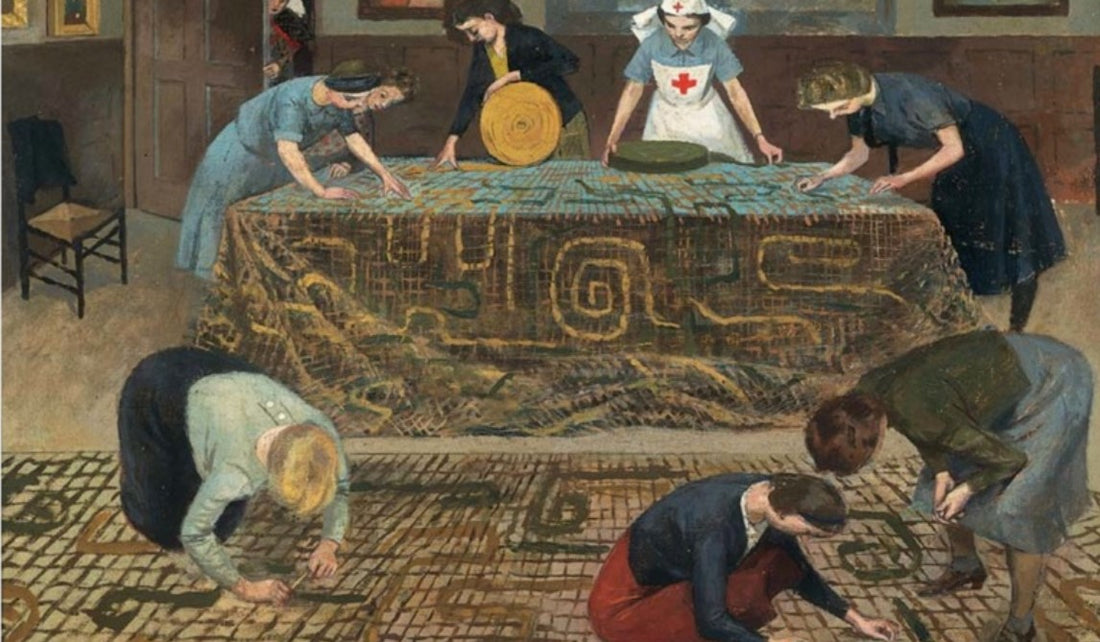
Share the Love

Image: Convalescent nurses making camouflage nets, Evelyn Dunbar, 1941, IWM.
To celebrate VE Day on Friday, we have made two articles about WW2 fashion and textiles available online for free. Patch Up looks at the “feestrok,” a celebration skirt made in the Netherlands to celebrate the end of German occupation. Hard Times looks at how people on the home front in the UK used their textile skills – and developed new ones – throughout the war, and during rationing. We hope you enjoy and share them. We are also launching a special offer valid from VE Day until Monday: for every back issue or subscription purchased, we will send a free digital back issue or subscription to a friend. Once you have made your purchase please send us the details of your friend by clicking on the link below.

Image: Nationale feestrok dochter, Jantje Maria van den Bosch-Elzinga, 1946 – 1955 © erven Jantje Maria van den Bosch-Elzinga, via Rijksmuseum, Amsterdam.
Read Patch Up for free, read Hard Times for free.
Here we look at an extract from Patch Up by Dr. Gillian Vogelsang-Eastwood: “A feestrok, or ‘celebration skirt’, is a patchwork skirt that was specially made to celebrate the liberation of the Netherlands from German occupation at the end of World War Two.This particular type of skirt is also known as a bevrijdingsrok (‘liberation skirt’), levensrok (‘life skirt’) or oranjerok (‘orange skirt’).”

Image: Rijksmuseum, Amsterdam.
“This colourful and special kind of garment has its origins in 1943, when Mrs Adrienne Minette (Mies) Boissevain-Van Lennep (1896-1965), a member of the Dutch resistance, was imprisoned by the Germans. Eventually two of her three sons were executed by the Germans, while her husband died in a concentration camp. She was initially held in a prison in Amsterdam and was then sent to Vught (located in the Netherlands) and later to Ravensbrück (in Germany) concentration camps. While in prison, Mies Boissevain-Van Lennep was secretly sent a scarf (lappendasje) made up of small pieces of cloth taken from the clothing of family and friends.This would later inspire her to develop the idea of the patchwork feestrok.” “In 1947 the national feestrok project was set in motion… Based on surviving records, it appears that about 4,000 skirts were eventually made and registered. But it is likely that far more were actually made and worn.”

Image: From Selvedge Issue 90 - Fabric of War Lance Corporal, Parachute Brigade, Battle of Arnhem, 1944, Thom Atkinson’s project Inventories.
Further reading, issues with articles on WW2:
Issue 32 – Frontline Fancy Goods

